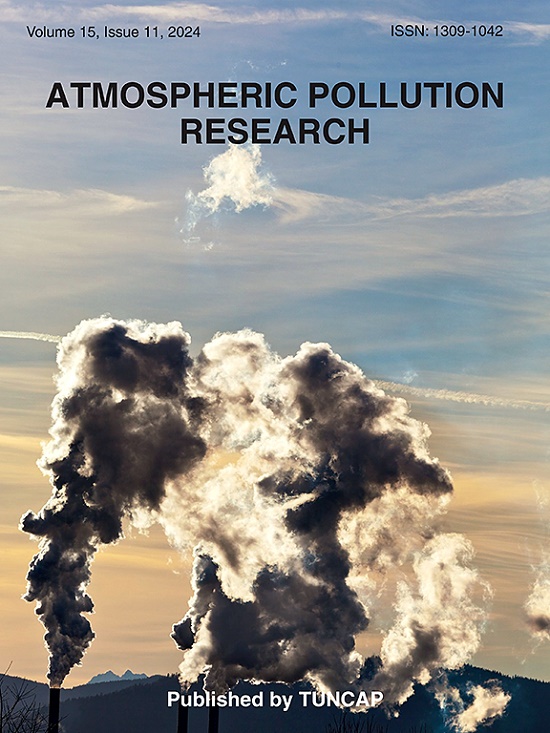Analysis of the horizontal and vertical distribution of a dust weather event in the Tarim Basin based on multi-source observational datasets
IF 3.9
3区 环境科学与生态学
Q2 ENVIRONMENTAL SCIENCES
引用次数: 0
Abstract
The study employed multi-source observation data from unmanned aerial vehicles (UAVs), satellites, and LiDAR conduct an observational study on a dust weather event that occurred in the Tarim Basin, China, from May 2 to 4, 2023. The results showed that FY-4A dust storm detection and MODIS aerosol optical depth (AOD) products could effectively observe the horizontal distribution of dust. Dust areas and intensities were identified at the AOD threshold range of 0.54–3.50. The convolutional neural network algorithm dust mask could identify dust structures with more precision compared to traditional FY-4 dust storm detection. Moreover, vertical particulate matter (PM) concentration changes determined by UAVs were analyzed at different altitudes, with low PM concentrations observed at higher altitudes. The dust area obtained through the CALIPSO vertical feature mask product was consistent with the PM concentration changes observed by the UAV. When the visibility value was below 1 km, the ground-based LiDAR 532 nm extinction coefficient (EC), backscatter coefficient (BC), and depolarization ratio (DR) values reached 3.42 km−1, 0.057 km−1sr−1, and 0.47, respectively. The vertical profile changes of EC, BC, and DR were in strong agreement with the vertical profile changes of the PM concentrations by the UAV.
基于多源观测资料的塔里木盆地一次沙尘天气水平和垂直分布分析
利用无人机、卫星和激光雷达等多源观测数据,对2023年5月2日至4日发生在中国塔里木盆地的一次沙尘天气事件进行了观测研究。结果表明:FY-4A沙尘暴探测和MODIS气溶胶光学深度(AOD)产品能有效观测沙尘的水平分布;在0.54 ~ 3.50的AOD阈值范围内确定了粉尘面积和强度。与传统的FY-4沙尘暴检测相比,卷积神经网络算法粉尘掩模可以更精确地识别粉尘结构。此外,分析了不同海拔高度无人机测得的垂直颗粒物(PM)浓度变化,高海拔地区观测到的PM浓度较低。通过CALIPSO垂直特征掩膜产品获得的粉尘面积与无人机观测到的PM浓度变化一致。当能见度低于1 km时,地基LiDAR 532 nm消光系数(EC)、后向散射系数(BC)和退偏振比(DR)分别达到3.42 km−1、0.057 km−1sr−1和0.47。EC、BC和DR的垂直剖面变化与无人机对PM浓度的垂直剖面变化具有较强的一致性。
本文章由计算机程序翻译,如有差异,请以英文原文为准。
求助全文
约1分钟内获得全文
求助全文
来源期刊

Atmospheric Pollution Research
ENVIRONMENTAL SCIENCES-
CiteScore
8.30
自引率
6.70%
发文量
256
审稿时长
36 days
期刊介绍:
Atmospheric Pollution Research (APR) is an international journal designed for the publication of articles on air pollution. Papers should present novel experimental results, theory and modeling of air pollution on local, regional, or global scales. Areas covered are research on inorganic, organic, and persistent organic air pollutants, air quality monitoring, air quality management, atmospheric dispersion and transport, air-surface (soil, water, and vegetation) exchange of pollutants, dry and wet deposition, indoor air quality, exposure assessment, health effects, satellite measurements, natural emissions, atmospheric chemistry, greenhouse gases, and effects on climate change.
 求助内容:
求助内容: 应助结果提醒方式:
应助结果提醒方式:


